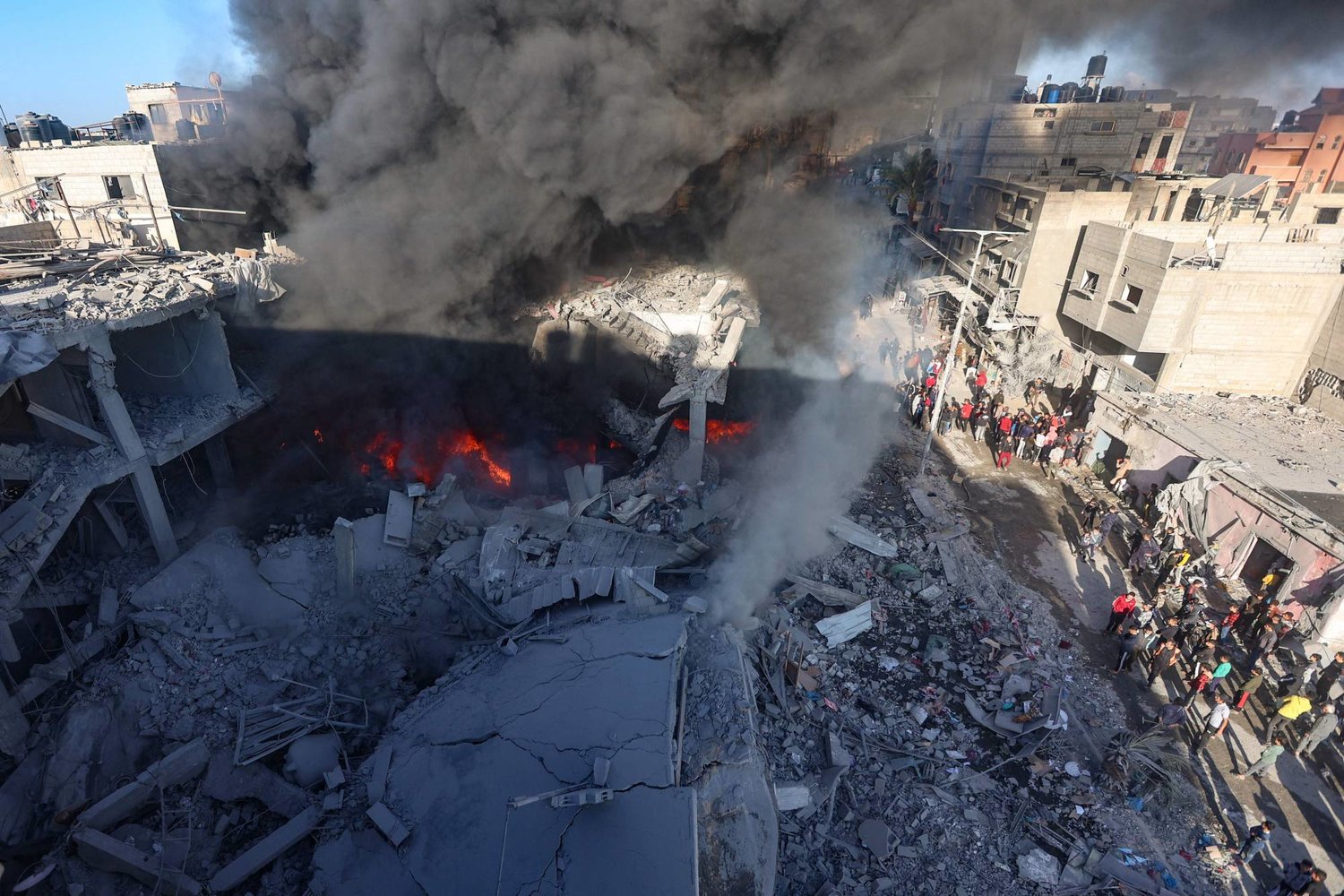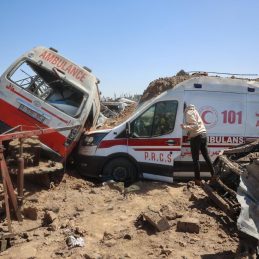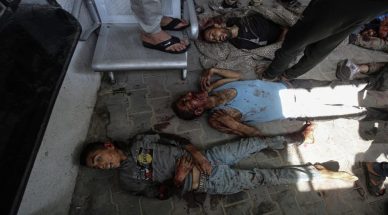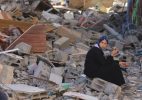GAZA, (PIC)
The Al-Zaytoun neighborhood, located southeast of Gaza City, is facing extensive urban destruction by Israeli firepower and forced displacement of its residents. The Israeli military has been demolishing buildings and flattening structures as far as the eye can see, from Street 10 to Street 8. What exactly is happening there?
Al-Zaytoun is near to Israeli military positions in Juhr al-Dik, central Gaza, and close to the geographical barrier known as the “Netzarim Axis.” The Israeli authorities are working to expand this axis to encompass all of Al-Zaytoun and much of the Sabra neighborhood as part of a plan to divide the Gaza Strip into security zones, control civilian life, exclude international humanitarian organizations, and establish a so-called “civil administration” to manage the distribution of humanitarian aid.
Since the beginning of the ground invasion of Gaza in early November 2023, Al-Zaytoun has been heavily targeted by Israeli incursions, resulting in massive destruction of homes and infrastructure, and the death or injury of hundreds of its residents.
On February 20, 2024, the Israeli army, with two brigades from the 162nd Division, launched a military operation in Al-Zaytoun that lasted several weeks and involved fierce and difficult battles with Palestinian resistance fighters.
On March 4, 2024, Israeli forces redeployed in the eastern part of Al-Zaytoun, signaling their determination to remain in the neighborhood, which they see as a guarantee of control over northern Gaza. On May 5, 2024, the Israeli military conducted a six-day operation to continue what it called “dismantling the infrastructure” of resistance in the area, and on August 24, 2024, the army once again launched a ground incursion into the neighborhood, accompanied by airstrikes, facing fierce resistance that inflicted casualties.
The neighborhood, with its long history of resisting Israeli incursions, has turned into a nightmare for the Israeli forces. Since the start of the genocidal war on Gaza on October 7, 2023, resistance fighters have engaged in fierce battles against various Israeli army brigades, clashing with armor and infantry units, despite Israel’s reliance on armored brigades to advance and target fighters in the neighborhood. The deployment of these brigades reflects Israeli fears of the intense combat that could lead to soldiers being sniped or captured.
The 36th Division, one of the largest armored divisions in the Israeli army, led the attack on Al-Zaytoun. This division includes four brigades, the most famous being the Golani Brigade, alongside the 401st Armored Brigade, known as the “Iron Trails.” The division consists of armored battalions, infantry units, and an engineering battalion and is considered one of the most important in field battles.
The 215th Artillery Regiment, part of the Israeli artillery corps, also participated in the battles in Al-Zaytoun, consisting of regular service battalions and reserve battalions, operating medium and long-range artillery.
Additionally, the Nahal Brigade, founded in 1982 and considered one of the “elite” brigades in the Israeli army, also took part in the fighting in Al-Zaytoun. This brigade usually operates in dangerous areas and is tasked with combat patrols, surveillance operations, and tactical support for incursions.
Al-Zaytoun has long been a stronghold of resistance and a significant challenge to Israeli incursions that have persisted since the Second Intifada. In 2004, fighters from the Al-Qassam Brigades detonated an Israeli APC, killing six Israeli engineering corps soldiers.
Today, the Al-Aqsa Flood battle and ground confrontations bring back memories of Israeli offensives in 2008 and 2014, when resistance in Al-Zaytoun effectively thwarted Israeli attempts to advance using strategic ambushes that inflicted casualties on Israeli troops and forced their withdrawal.
The strategic significance of Al-Zaytoun stems from its history as a focal point of Israeli military incursions and its proximity to key routes like Al-Jalaa and Salah al-Din streets, which the Israeli army has aimed to control as main thoroughfares to isolate different areas of Gaza.
Spanning 9,000 dunums, Al-Zaytoun lies in the heart of the old city southeast of Gaza City. Named after the abundance of olive trees that cover much of its southern land, it is one of the oldest and largest neighborhoods in Gaza and the second most populous, home to 80,000 residents.
The neighborhood is notable for its many historical and archaeological landmarks, including the Katib Wilayah Mosque with its ancient minaret dating back to 735 AD, as well as the Shamma and Ajami mosques, the Samaritan bath, the Baptist hospital, and the Church of Saint Porphyrius, the third oldest church in the world, built in the fifth century AD, which was bombed by the Israeli army on October 17.
The military assault on Al-Zaytoun has caused widespread destruction, according to Ahmad Yassin, who fled the neighborhood months ago. He describes the devastation as indescribable, with the Israeli army having burned and destroyed most homes, either partially or completely, through artillery and aerial bombardments during repeated incursions.
He notes that in May, the Israeli army deliberately burned over 75 homes near the Al-Zaytoun Clinic, the Muslaba area, and Ali Mosque Street. They also destroyed the clinic, which served tens of thousands of residents from both the neighborhood and surrounding areas, as well as water wells, electricity networks, and sewage systems.
Military expert Fayez al-Duwairi points out that the repeated military operations in Al-Zaytoun demonstrate that Israel’s claims of dismantling the Al-Qassam Brigades and their organizational structures in the area are false. The intense ongoing battles in Al-Zaytoun indicate that the resistance’s combat infrastructure in the northern sector has not been crushed.
He explains that the footages released by the resistance factions document evidence of Israeli brigades and soldiers falling under their fire, highlighting the resistance’s significant field control in Al-Zaytoun.
Al-Duwairi states that Israel aims to militarily control Al-Zaytoun to achieve the division of northern Gaza from the south, effectively cutting off resistance supplies and points of contact—a central objective for Israeli forces since the onset of the ground assault on Gaza.
He adds that the terrain favors the resistance, allowing them to conduct operations behind enemy lines and providing opportunities to attack subsequent waves of Israeli forces.















